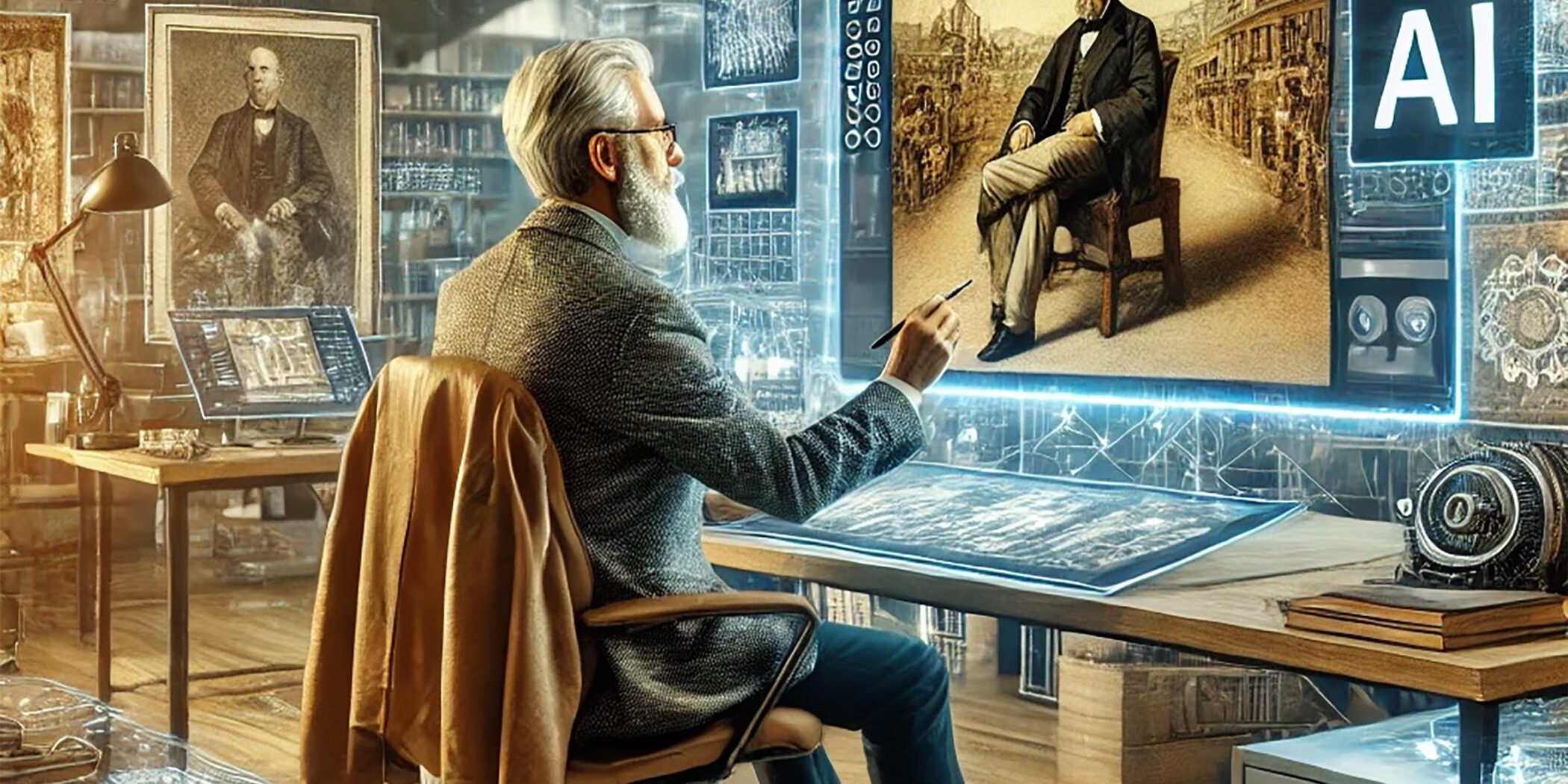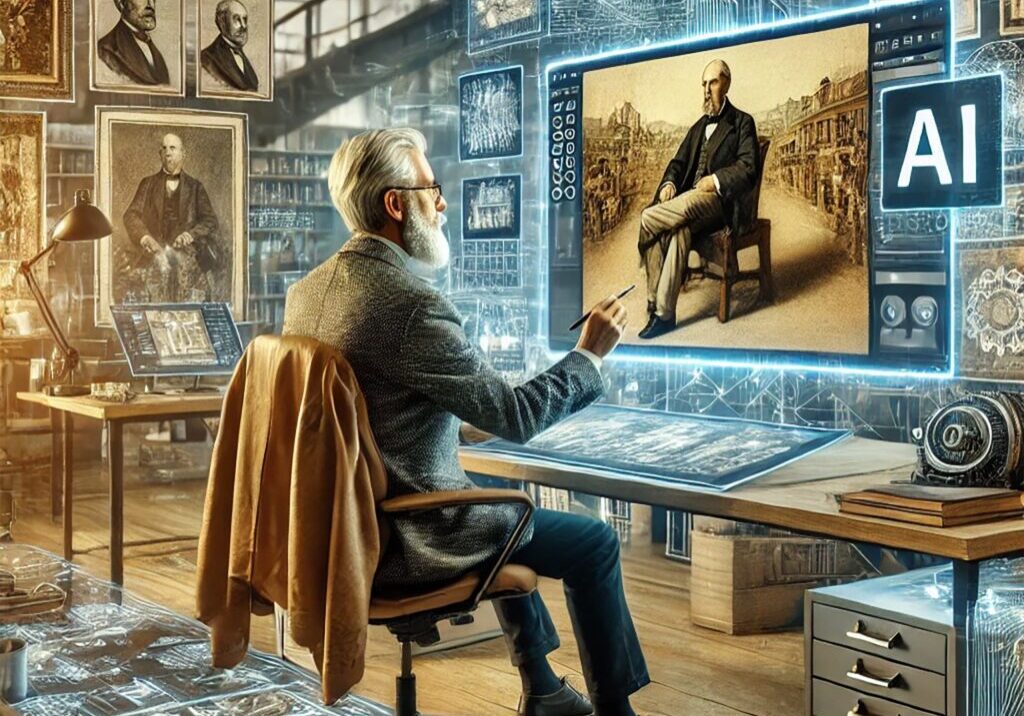
The Digital Age Begins: From Circuits to Silicon
Introduction
Every revolution makes noise- until this one. The dawn of the Digital Age arrived not with cannons or speeches, but with the soft hum of a circuit, the quiet blink of a terminal, the silent logic of ones and zeros moving beneath human hearing. It was invisible at first. Machines behind glass. Wires behind walls. Commands behind screens. And yet it reshaped everything. It changed how people worked, learned, connected, and imagined the future.
In the 250th Anniversary Mural, the digital revolution does not appear as a singular flash of innovation. It emerges gradually- panel by panel, screen by screen. A glowing terminal. A rack of punch cards. A young person coding in a garage. This is the story of how America crossed the threshold into the age of silicon- an era not built with hammers and steel, but by logic gates and human curiosity.
Wires and Wonder: The Early Machines The mural’s visual journey into the digital begins with size. A massive room filled with early computers- the kind that took up walls and consumed entire workdays to process the simplest of equations. ENIAC. UNIVAC. Names etched into the early circuitry of America’s digital imagination. Engineers in white shirts and ties walk between machines. A woman in a lab coat plugs a cable into a panel the size of a door. These were not consumer products. They were national tools- used for war calculations, weather prediction, census counts. And yet, they hinted at something larger: that thought could be rendered in electricity. That logic could be built. The mural shows the transition from mechanical calculators to digital logic as a slow but deliberate ascent. A spark leaps across a gap. A new era begins.
Silicon Dreams: The Rise of the Chip From hardware to hardware, the scale begins to shrink. A small image shows a semiconductor wafer under magnification. Another shows a cleanroom- gloved hands lowering a microchip into a circuit board. Beneath the imagery lies something unseen: transformation. With the invention of the integrated circuit in the late 1950s and the birth of Silicon Valley, the mural depicts the dawn of possibility. Computers no longer filled rooms. They could fit on desks. Then in pockets. But this was more than miniaturization. It was a philosophical shift. The mural emphasizes not just the hardware but the shift in human relationship to it. A young girl sits at a glowing terminal. A teacher uses early educational software. A hospital screen monitors vitals with digital precision. This wasn’t just invention- it was immersion.
From Government to Garage What began as institutional became personal. In one panel, a military communications system broadcasts through satellite. In the next, two men in a garage tinker with circuit boards- wires spilling over a folding table. The mural evokes the origin stories of tech’s iconic figures, but refrains from naming them. Instead, it shows the idea: that innovation is not always born in towers. Sometimes, it starts under a bare bulb, beside a pizza box.
This democratization of technology is one of the mural’s key themes. The computer as not only tool but canvas. The internet as not only network but neighborhood. The mural shows people connecting across screens, across borders, across language- sparks of light connecting homes like stars on a grid. The Digital Landscape Expands By the final stretch of the digital arc, the mural opens wide. A satellite orbits above. A smartphone glows in a hand. A line of code scrolls across a transparent screen. But there is restraint here. The imagery is not crowded. It is luminous. Suggestive. The point is not saturation. It is synthesis.
The mural does not overwhelm viewers with a torrent of technology. It shows integration- digital tools becoming ordinary. A child learns coding beside a chalkboard. A farmer checks weather reports on a tablet. A nurse reviews digital charts. The digital age, in this portrayal, is not dystopia. It is continuity- thought made fluid, knowledge made portable, connection made ever-present. Contrasts and Cautions The mural also includes a quiet counterbalance. A figure scrolls endlessly beside a darkened window. A group of students sits in a circle, but their attention is split between glowing screens. There is both power and pause in these images. The mural acknowledges what digital speed can cost- presence, attention, tangibility. It does not condemn. But it remembers. Progress must be felt, not just downloaded.
Why It Still Matters
The Digital Age is not an endpoint. It is a beginning. It redefined labor, education, community, and creativity. It raised new questions about identity, privacy, truth. It accelerated the pace of life and the scale of innovation. And it is still unfolding. The mural captures this not by declaring arrival- but by showing trajectory. The glow of screens leads into space. Into voice. Into what comes next. But always, beneath it all, is a human hand. A cursor blinking. Waiting. Listening.
Further Reading / Explore More
As the mural moves from silicon to the stars, it carries forward the pulse of invention. See how digital logic gives way to virtual connection, and how America’s future still hums with the electricity of imagination.
Related Blog: The Pulse of Invention: American Ingenuity from Patent to Prototype Mural Link: https://usa250thanniversarymural.com Tags: 250 Mural, Digital History, Silicon Valley, Microchips, ENIAC, Personal Computing, American Innovation, Tech Culture, Digital Evolution, Public Art and Technology

